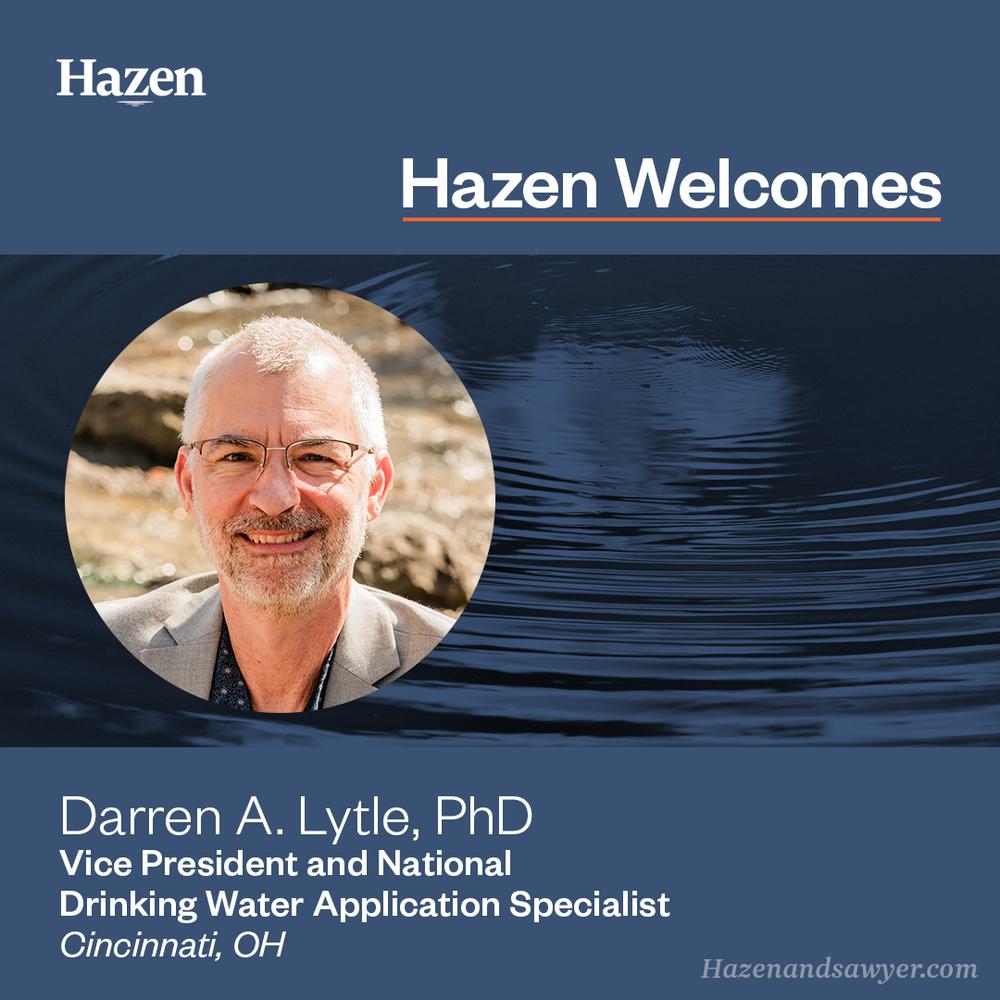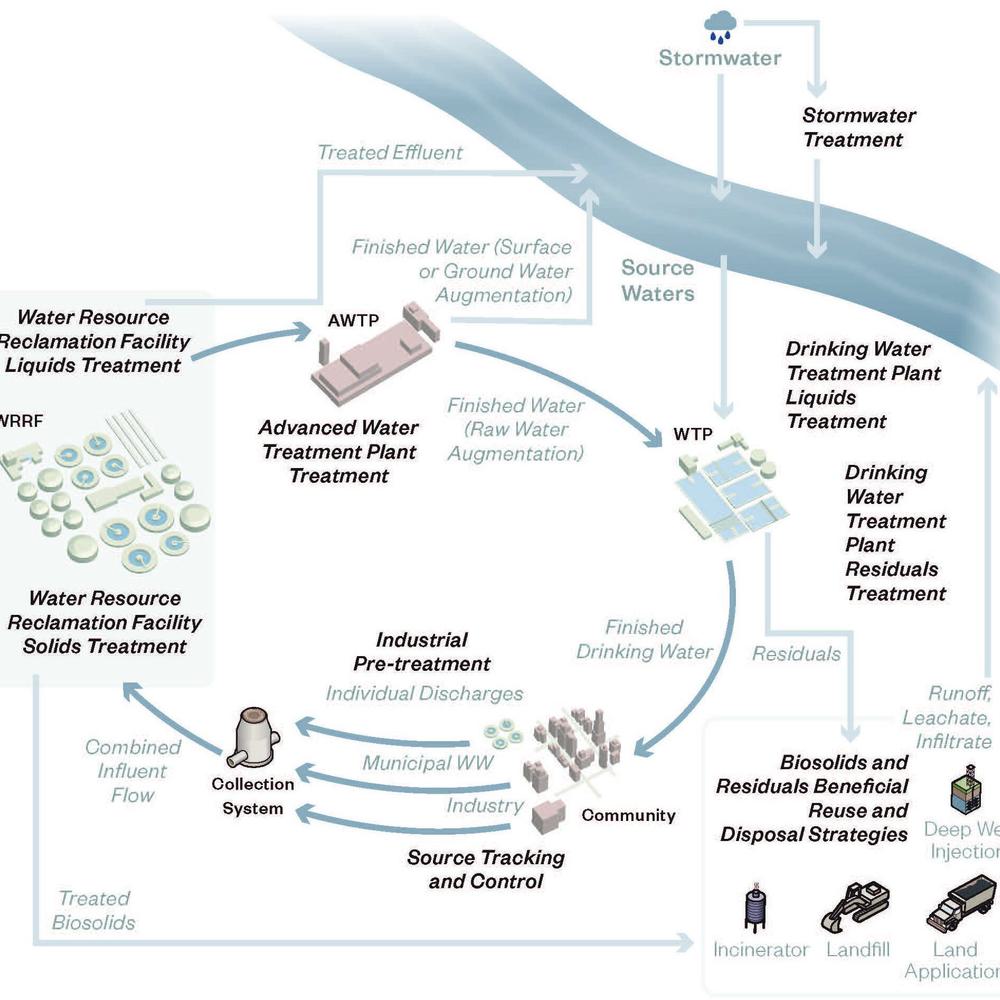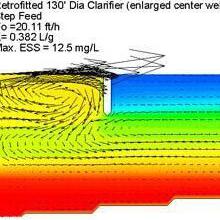Aeration Systems Test Results
Key Findings for Process Optimization
Last Modified Jul 06, 2022
Many of the fine-pore diffusers typically employed for aeration in municipal wastewater treatment decline in performance over time, with consequent increases in process energy usage and operating costs. Hazen and Sawyer’s Applied Research Group sponsored a study by the University of California, Irvine, that extensively tested 17 membrane diffusers from five different manufacturers to measure oxygen transfer efficiency, dynamic wet pressure, and process water effects.
We’ve used the test results to develop a dynamic energy model that quantifies decreasing performance over time and can be used for process optimization, producing significant energy conservation and reducing operating costs. Aerobic biological treatment is the most common process for municipal wastewater treatment plants in developed areas of the world. Since aeration accounts for 45 to 75% of the wastewater process energy, it is typically the primary candidate for energy optimization and improvement efforts.
Related Topics:
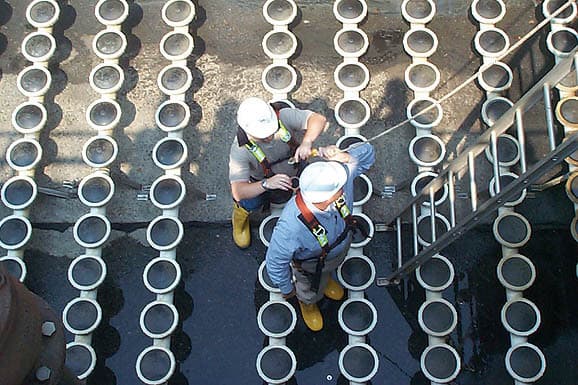
Due to their lower specific energy requirements, fine-pore diffusers have become the most common aeration technology in municipal wastewater treatment. Among the various types of fine-pore membranes, ceramic discs and polymeric membranes are currently the most common, and therefore the subject of our research.
We performed laboratory and field tests to measure oxygen transfer efficiency, dynamic wet pressure, and process water effects (i.e., alpha factors) and compiled the experimental datasets into a dynamic energy and carbon footprint model that quantifies fine-pore diffuser decrease in performance with increasing time in operation.
Using the model to comparatively analyze the energy usage of different diffuser models, we’ve illustrated a comparative scenario over the lifespan of the diffusers. The resulting data increases our understanding of the factors that affect energy consumption of an aeration system, helping us identify potential strategies for improved energy efficiency.
To further our understanding of the dynamics of diffuser efficiency, and further improve design procedures, Hazen and Sawyer has since extended the scope of this research to include a long-term fouling study performed in real wastewater mixed liquor. The 45 ft3 aeration tank built for this project is currently hosted by the Irvine Ranch Water District in its Michelson Water Reclamation Plant in Irvine, CA. UCI students, under the supervision of Professor Diego Rosso, are currently collecting data on a regular basis, to build the first dataset inclusive of efficiency and pressure drop time-sensitive variations. This, combined with the already collected datasets in clean and process water for new diffusers, will allow even more precise quantification of loss of performance and increase in pressure drop with time in operation.

New Data Informing Better Design
Regardless of type, model, or manufacturer, the fine-pore diffusers show decreased efficiency and increased pressure drop with increasing air flow rate. Also, multiple diffuser configurations (i.e., increased number of diffusers per unit of tank area) may help mitigate decreased efficiency at elevated air flow rate, as they help distributing the air flow through more and smaller bubbles. Early results on diffuser fouling confirm our expectation that the energy usage of fine-pore diffuser operation tends to rise with increasing time in operation. This pattern provides a significant opportunity for improvement in terms of process optimization and cleaning schedules.
Design procedures have historically relied on manufacturer’s datasets for efficiency and operating pressure drop, but these datasets have never accounted for performance decline with time in operation. Using one of the most comprehensive independent studies on fine-pore diffusers completed to date, we’ve developed a dynamic energy model that quantifies fine-pore diffuser decrease in performance with increasing time in operation. These modeling results give rise to a new level of process optimization, offering promise of significant energy conservation and operating cost containment for plants using aerobic biological treatment.
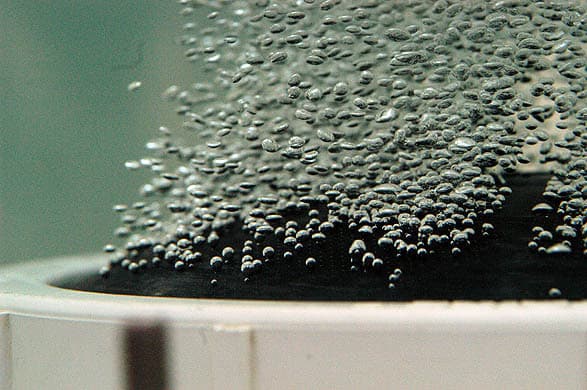
Measuring Diffuser Performance
Aeration diffuser performance is measured in clean and process water as oxygen transfer efficiency (i.e., fraction of oxygen transferred to the wastewater per unit oxygen discharged by the aeration system) and corrected for process water conditions with an alpha factor. Oxygen transfer efficiency of fine-pore diffusers commonly decreases with time in operation. The pressure drop through a fine-pore diffuser may also increase proportionally with time in operation, and these effects are thought to be due to biological fouling and inorganic scaling, depending on plant-specific wastewater characteristics.
These effects contribute to reducing overall process efficiency and increasing operational costs. Aeration blower sizing is also dependent on diffuser efficiency and pressure drop; blower requirements may therefore increase dynamically due to loss of diffuser performance with increasing time in operation, increasing process energy costs. Moreover, blower discharge pressure may be limiting during upgrades or retrofits – hence, the quantification of diffuser pressure drop curves is a critical component for an appropriate blower selection.



